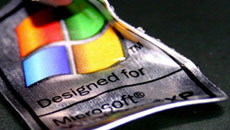Not happy with your kids being hooked to ipads or tablets playing video games? Turn to a new kind of gaming device, developed by an Indian-origin entrepreneur here, that uses the iPad but brings kids back into the real world of play.
A brainchild of former Google employee Pramod Sharma who began an entertainment start-up called Tangible Play in California, the $99 (Rs.590) device called 'Osmo' works in a sophisticated yet remarkably simple way.
Anything from toothpicks to paintbrushes can be part of the experience.
"Osmo extends gameplay beyond the screen, changing the space in front of a tablet into an interactive environment that turns any object into a digitally connected game piece," Sharma emphasised.
For Sharma, "his team is pioneering actual reality - unleashing experiences that go beyond digital screens".
This is how this device works.
Just set the iPad in a vertical stand and attach a small mirror in front of the tablet's camera so that the lens uses the mirror's reflective capability to see downward.
Now, you can play puzzle of block games where the camera recognises small objects that you put in front of the iPad.
A mobile app directs the kids to play collaborative games that make use of both the screen and physical objects.
"Kids love iPads but they get sucked into the screen. That is not healthy. Technology should remove that and we are working on it," Sharma told VentureBeat.
One of those games is Osmo Words - a game that resembles Hangman.
The iPad shows you an image of something like a bear and a word that you must guess with four letters.
Two players can toss out letters in front of the iPad.
The camera will recognise both incorrect letters and correct letters.
You can play Osmo Words in a competitive mode too.
"Tangible Play has started a crowd-funding campaign to create a movement around Osmo (short for osmosis, or learning by seeing)," Sharma was quoted as saying.
After graduating from Stanford, Sharma spent eight years at Google architecting book scanning machine and then held senior management roles in search, Gmail and distributed computing.





